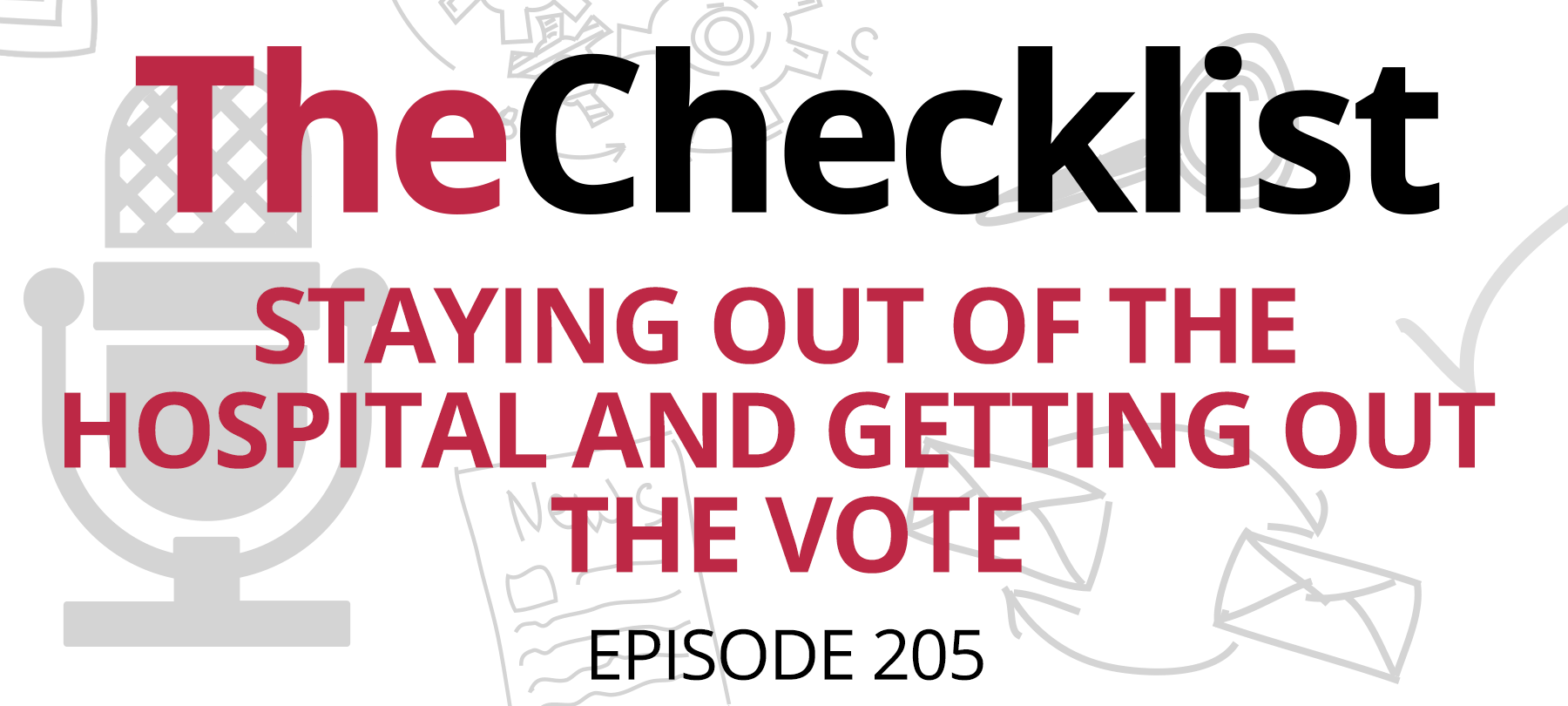
Checklist 205: Staying Out of the Hospital and Getting Out the Vote
This week on the Checklist, we’ll cover two timely topics:
Ransomware and healthcare
COVID-19 is already straining the world’s healthcare systems, but federal officials in the United States are warning that hospitals and clinics now need to worry about ransomware attacks as well.
According to a joint statement issued by the Cybersecurity and Infrastructure Security Agency (CISA), the Federal Bureau of Investigation (FBI), and the Department of Health and Human Services (HHS), there is credible evidence that cybercriminals in Russia pose an “increased and imminent” threat to the nation’s healthcare facilities. Their motivation is financial, according to the government alert; interestingly, the same document specifically mentions the use of TrickBot malware in these attacks, which was the target of a cyber-operation carried out by U.S. military hackers earlier this month.
We’ve known for some time about the cybersecurity challenges faced by the health sector, but the problem is continuing to grow. In September, a ransomware attack knocked the systems of a major hospital chain offline, resulting in increased ER wait times, delayed lab results, and the failure of critical equipment.
While hospital security teams work to patch their software and harden their networks, ordinary Americans are urged to do what they’re hopefully already doing: take all necessary precautions to stay healthy. You know the drill: wear a mask, practice social distancing, and wash your hands!
Putting the “out” in get out the vote
If you live in the United States, you’re no doubt aware that Election Day is November 3rd — just a couple of days away now. And while record numbers of Americans have already voted by mail, most election experts and state officials are now warning that it’s probably too late to do so if you haven’t already.
The rules vary by jurisdiction, but in over two dozen states, absentee ballots must be received by election officials on Election Day in order to be counted — and in other states, legal battles are already underway to shorten the period after the election during which mail-in ballots can be counted. Add to that the fact that the U.S. Postal Service is already strained to the breaking point, and you’ll quickly see why voters’ organizations are warning that it’s not advisable to mail your ballot in at this point.
So what happens if you do have a mail-in ballot, but you haven’t actually mailed it in yet? Well, it’s time to put Plan B into effect…and if that fails, Plan C or D…
For most folks, the best option will be to hand deliver your ballot to your local election clerk or drop box, if possible.
If that’s not possible, and if you feel safe doing so, voting in person on Election Day is a reasonable fallback plan. Remember to take your blank absentee ballot with you: you may be asked to simply vote in a traditional voting booth, but you may also be able to fill in your absentee ballot at the polling place and have it counted that way. In some precincts, you may be given a provisional ballot instead (though be aware that in the past there have been issues with polling sites not having enough provisional ballots on hand).
If you can’t do any of those things, election experts say that you should just go for the Hail Mary and drop your absentee ballot in the mail. Yes, it may not be counted, but at least there’s some chance that it will be, while your unmailed ballot has precisely zero chance of being counted—so if all else fails, go ahead and play the odds!
That brings us to the end of this Checklist, but we’ll be back next week with another episode of the podcast. In the meantime, check out our archives or take a moment to write to us with a suggestion for a future program.
